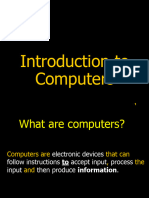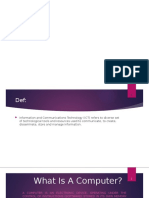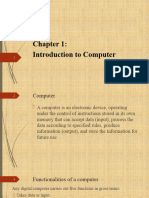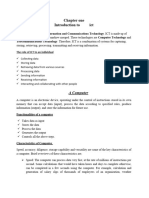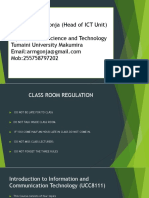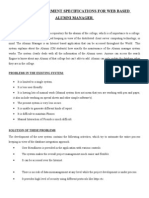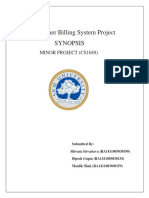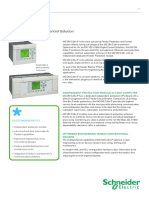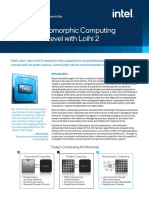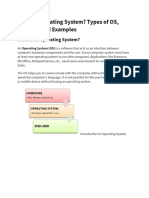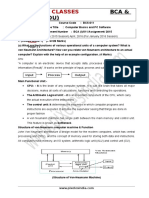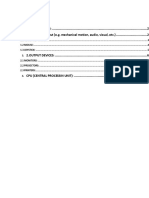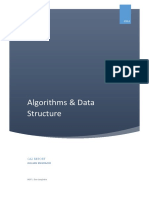0% found this document useful (0 votes)
15 views59 pagesIntroduction To Computer
This document provides an introduction to computer systems. It discusses that computers are made up of both hardware and software. The hardware includes tangible parts like the central processing unit, memory, storage, input and output devices. The software includes operating systems and application programs. It describes the main components of a computer system in detail, including how they are organized and function together. It also discusses different types of computers and units of measurement used.
Uploaded by
basmaladrmohamedCopyright
© © All Rights Reserved
We take content rights seriously. If you suspect this is your content, claim it here.
Available Formats
Download as PDF, TXT or read online on Scribd
0% found this document useful (0 votes)
15 views59 pagesIntroduction To Computer
This document provides an introduction to computer systems. It discusses that computers are made up of both hardware and software. The hardware includes tangible parts like the central processing unit, memory, storage, input and output devices. The software includes operating systems and application programs. It describes the main components of a computer system in detail, including how they are organized and function together. It also discusses different types of computers and units of measurement used.
Uploaded by
basmaladrmohamedCopyright
© © All Rights Reserved
We take content rights seriously. If you suspect this is your content, claim it here.
Available Formats
Download as PDF, TXT or read online on Scribd
/ 59




